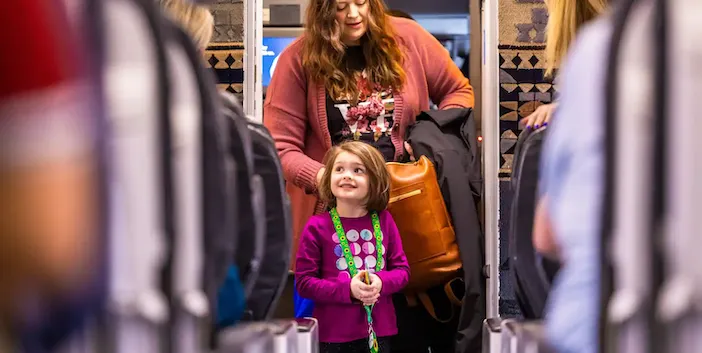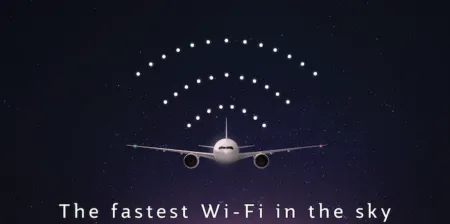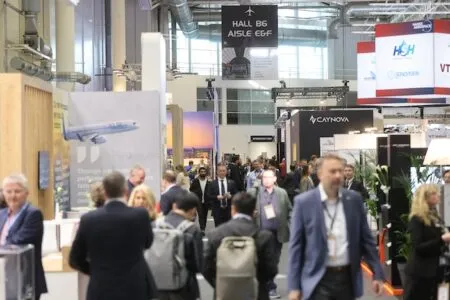While air travel can be challenging for many passengers, for neurodiverse individuals and those with invisible disabilities, these challenges can be hugely amplified. As the term ‘neurodiversity’ encompasses a wide range of neurological differences, including sensory sensitivities, cognitive differences and learning difficulties, barriers to air travel can be manifested in numerous ways for these passengers.
According to data from The Hidden Disabilities Sunflower, up to 80% of disabled individuals are living with a non-visible disability. As such, this segment of passengers is by no means insignificant, and should be an essential consideration for airlines, aircraft interior designers and suppliers.
Encouragingly, recent innovations from organisations in the sector suggest that the aircraft interiors industry is shifting to acknowledge and better understand the needs of neurodiverse individuals and those with invisible disabilities. But what does development in this area actually look like? How effective have these innovations been in fostering a more inclusive passenger experience, and what factors are driving this change?
Understanding neurodiversity
According to Harvard Health, the neurodiversity movement was first acknowledged in the 1990s. In the following decades, the profile, understanding and awareness of neurodiversity has grown considerably among the public.
However, the progress and acknowledgment of neurodiversity among airlines has lagged behind the level of public awareness. When compared to the consideration and action taken for passengers with physical disabilities or limited mobility, neurodiversity is sometimes considered an overlooked area of accessibility in aircraft interior design.
However, thoughtful design, innovative use of technologies, and collaborative partnerships can enable airlines and the aircraft interiors industry to create a more inclusive and comfortable travel experience for all.
Two experts in this field – Antonio Ferrara, founder of Aviators for Autism and Natalie Rodriguez of Natalie Rodriguez Luxury Design – discuss the evolution in the aviation and aircraft interiors industries for neurodiverse individuals. Aviators for Autism is a non-profit organisation focused on breaking down barriers, and helping autistic and neurodiverse communities to thrive in all aspects of aviation.
Ferrara explains, “Much of the focus has been on airport and aviation environments, but that is beginning to shift. The emphasis is shifting beyond physical accessibility to include sensory sensitivities, anxiety management, and overall comfort for patrons and passengers. As the number of individuals diagnosed with autism and other invisible disabilities is growing, we have started to see a growing interest in features that promote a calmer in-flight experience, such as enhanced noise reduction, adaptable lighting, and intuitive cabin layouts to minimise sensory overwhelm.”
Recent industry innovations
While many aircraft interiors schemes have overlooked the needs of neurodiverse passengers, recent industry innovations signal a positive shift. In recent years there has been a growing recognition of these unique requirements. From a supplier perspective, Muirhead recently released a ‘Sensation’ collection of leather seat covers, specifically designed with neurodivergent adults in mind. According to Muirhead, it worked closely with Visible Inclusive Accessibility (VIA – the Scottish disability consultancy) while also speaking directly with neurodiverse individuals to guide the design process.
When it comes to airlines, many are now actively implementing strategies to address the needs of neurodiverse travellers. For example, in January 2025, Emirates announced it was set to be ‘the world’s first Autism Certified Airline’. This certification is expected to be awarded by the International Board of Credentialing and Continuing Education Standards (IBCCES) in the coming months. In practice, over 30,000 Emirates staff will undergo specialist autism and sensory awareness training. The airline also plans to introduce sensory guides and neurodiverse sensory products for passengers.

Similarly, at the end of 2024, Alaska Airlines reported it had improved its practices for enhanced accessibility for travellers. The airline’s Disability Office teamed up with the Autism Society and port authorities to host a disability practice flight at Portland International Airport. The event gave guests with disabilities the chance to practice everything from navigating the airport to going through security, and even a simulated flight.
Though neurodiversity must be acknowledged as an independent area of concern for airlines, Natalie Rodriguez explains that addressing the needs of this group often aligns with the considerations for physical accessibility. She says, “I have worked on aircraft interiors that incorporate accommodations for passengers with physical challenges, ensuring ease of movement and accessibility within the cabin. However, many of these principles – such as reducing physical strain, simplifying movement through the space and providing a stress-free environment – overlap with considerations for neurodivergent travellers.
She adds, “One major area where aircraft interiors can support neurodivergent passengers is through advanced soundproofing, which helps control noise levels and create a more soothing environment. Further refinements in sound-dampening materials and customisable white noise or ambient soundscapes could enhance the experience even more.”
The move towards a truly inclusive onboard environment hinges on stakeholders from all sides of the industry coming together to acknowledge the challenges being faced and taking actionable steps to drive change. The importance of collaboration between designers, airlines and disability advocacy groups cannot be understated in creating truly accessible air travel for everyone, regardless of visible or invisible disabilities.
For more information on, or to register for, Aircraft Interiors Expo( AIX) 2025, which takes place 8-10 April at the Hamburg Messe, visit https://www.aircraftinteriorsexpo.com/en-gb.html
On the day before AIX (Monday 7th April), Hamburg Messe will also host the Passenger Experience Conference (PEC), with accessibility and inclusion featuring heavily throughout the programme. Hosted by a variety of industry experts, the session ‘Accessible, Inclusive And Equitable – Action To Improve Air Travel For All’, at 16.45 will explore how to hard-wire universal design principles into product and experience development and delivery to support end-to-end journeys that have the needs of all passengers front of mind.





